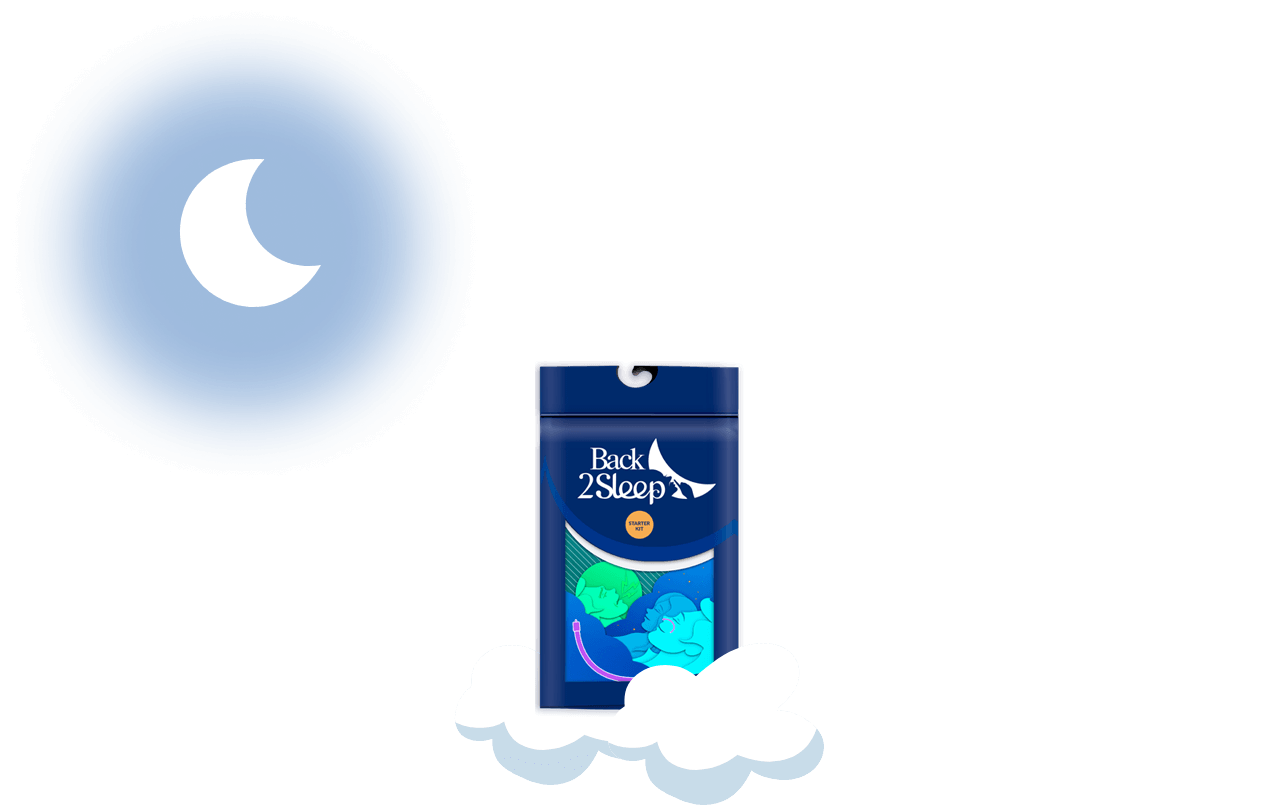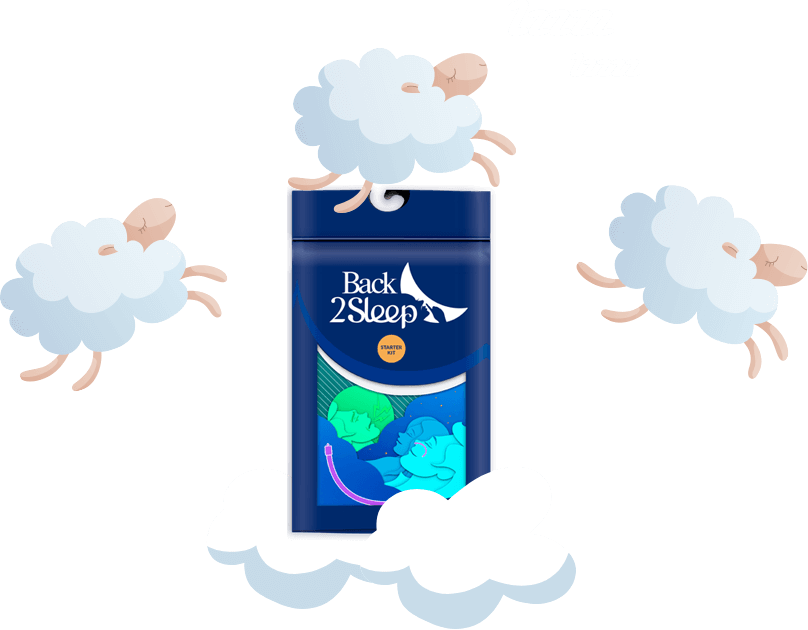Sleep Apnea and Sexuality: The Connection No One Talks About
Understanding how untreated sleep apnea silently destroys intimate relationships and what you can do about it
Sleep apnea manifests with extreme daytime fatigue, drowsiness, irritability, and concentration difficulties, but recent groundbreaking research reveals a more intimate problem: sleep apnea dramatically decreases libido and sexual function in both men and women. If you're experiencing declining sexual desire alongside chronic exhaustion, sleep apnea could be the hidden culprit sabotaging your intimate life. The latest 2024-2025 studies show that women with obstructive sleep apnea have 2.56 times higher risk of female sexual dysfunction, while up to 80% of men with OSA also suffer from erectile dysfunction—yet this critical connection remains one of the most underdiagnosed and undertreated aspects of sleep disorders.
Sleep apnea consists of multiple involuntary interruptions in breathing throughout the night, with pauses lasting several seconds (sometimes 30 seconds or longer) that trigger micro-awakenings. These disruptions fragment sleep quality and disturb the circadian cycle, creating a cascade of effects that extend far beyond simple tiredness. The direct result manifests as overwhelming daytime fatigue and non-restorative sleep—but the impact on sexual health and intimate relationships represents an equally devastating consequence that couples rarely discuss openly.

Sleep Apnea and Libido: The Biological Connection
The relationship between sleep apnea and libido operates through multiple interconnected biological mechanisms. Optimal sexual desire requires that individuals be well-rested, yet sleep apnea directly prevents this fundamental requirement. In men, sexual desire depends heavily on testosterone secretion, which increases primarily during specific phases of deep sleep. Sleep apnea disrupts these critical deep sleep phases through micro-awakenings, preventing the body from secreting adequate hormones. When testosterone levels fail to reach necessary thresholds for healthy libido, sexual function deteriorates significantly.
2025 Research Breakthrough: A comprehensive meta-analysis involving over 1.3 million women with OSA revealed that obstructive sleep apnea increases female sexual dysfunction risk by 156% (OR 2.56; 95% CI 1.38–4.75). This represents the largest study ever conducted on the relationship between sleep apnea and women's sexual health.
This situation frequently installs persistent conflicts within couples, as partners struggle to understand why intimacy has declined. Many relationships suffer silently as both individuals attribute the problem to relationship issues, stress, or aging—never suspecting that a treatable sleep disorder lies at the root of their intimate difficulties.

How Sleep Apnea Destroys Sexual Function
💤 REM Sleep Disruption
Scientists discovered that multiple erections (men) and clitoral swelling (women) naturally occur during REM sleep phases lasting ~25 minutes, repeated 4-5 times nightly. These "nocturnal exercises" maintain genital health, elasticity, and sensitivity—but sleep apnea shortens or eliminates these phases entirely.
🫀 Cardiovascular Damage
OSA increases cardiovascular disease risk, restricting blood supply to sex organs. Studies show 91.3% of men with erectile dysfunction also had obstructive sleep apnea—highlighting the profound vascular connection.
🧪 Testosterone Suppression
Interrupted deep sleep prevents testosterone production in both sexes. Men with OSA show significantly lower testosterone levels, directly correlating with erectile dysfunction and reduced sexual desire.
😞 Psychological Impact
Sleep deprivation causes depression, anxiety, irritability, and diminished self-image—all powerful inhibitors of sexual desire and arousal. The autonomic nervous system's stress response becomes hyperactive, further suppressing libido.
Erectile Dysfunction and Sleep Apnea: The Alarming Statistics
Beyond suffering from decreased sexual desire and libido, patients with sleep apnea frequently experience erectile dysfunction in men and poor vaginal lubrication in women. The scientific evidence documenting this connection has become overwhelming, yet remains underrecognized in clinical practice.
| Research Finding | Statistics | Clinical Significance |
|---|---|---|
| ED Prevalence in OSA | 30-80% of men with OSA have erectile dysfunction | Far higher than general population (affects 1 in 10 men overall) |
| OSA in ED Patients | 91.3% of men with ED also had OSA (AHI > 5) | Suggests ED should prompt OSA screening |
| Nocturnal Erections | 46% of OSA patients have abnormal nocturnal penile tumescence | Indicates physiological erectile mechanism impairment |
| Female Sexual Dysfunction | Women with OSA: 54% higher odds HSDD, 117% higher arousal disorder | First large-scale evidence (1.3M+ women studied in 2024) |
| Age Factor in Men | Men 65+: 4.84x higher ED risk with severe OSA | Younger men (<65) show weaker correlation |
| Relationship Impact | 63% relationship problems, 69% reduced desire, 46% reduced arousal | Affects couple dynamics beyond individual sexual function |
| Orgasm Difficulties | 29% of OSA patients report difficulty achieving orgasm | Impacts both physical and psychological sexual satisfaction |
For years, scientists have documented that multiple nocturnal erections and clitoral engorgement occur naturally during REM sleep phases. These episodes last approximately 25 minutes and repeat four to five times per night, serving an essential physiological function: maintaining proper genital functioning. They ensure optimal penis elasticity, adequate clitoral sensitivity, and sufficient vaginal lubrication.
In individuals with apnea, the duration of these critical sleep phases becomes shortened or—in severe cases—completely absent. Consequently, these vital "mini-exercises" cannot occur. Over time, erectile dysfunction of the penis becomes progressively more frequent, while lack of clitoral sensitivity and vaginal dryness affect sexual intercourse quality in women.

Female Sexual Dysfunction: The Overlooked Epidemic
Women's sexual health in relation to sleep apnea has received far less research attention than men's erectile dysfunction—representing a significant gap in medical knowledge that recent 2024-2025 studies have begun addressing. The findings reveal an alarming picture of how obstructive sleep apnea devastates women's sexual function across multiple domains.
Groundbreaking 2024 Research: A massive U.S. claims database analysis of 1,317,491 women diagnosed with sleep apnea revealed dramatically increased odds of sexual dysfunction:
- ✓ 54% higher odds of hypoactive sexual desire disorder (HSDD)
- ✓ 117% higher odds of female sexual arousal disorder
- ✓ 70% higher odds of female orgasmic disorder
- ✓ 156% higher odds of overall female sexual dysfunction
Women with sleep apnea experience multiple sexual health challenges:
Sleep apnea affects women's sexuality both before and after menopause, though risks escalate significantly once menopausal transition begins. Research demonstrates that both pre- and post-menopausal women with sleep apnea experience reduced desire, arousal, and orgasm—with OSA severity directly correlating to the degree of sexual dysfunction experienced.
Real Stories: How Sleep Apnea Destroyed (and Saved) Relationships
"My wife was almost wanting to sleep in a separate room because of my snoring. But worse than that, our entire intimate life had vanished. Six months after starting CPAP treatment, we're like newlyweds again. I didn't realize how much my sleep apnea was destroying our marriage."
"I spent two years thinking something was wrong with me—that I'd lost interest in my husband. After my sleep study revealed severe OSA and I started using the Back2Sleep device, my desire came back within weeks. It saved our relationship."
"My erectile dysfunction at 42 years old was devastating. Multiple doctors prescribed medications that didn't work. Finally, one suggested a sleep study. Treating my sleep apnea restored my sexual function better than any pill ever could."
"As a woman in her 50s, I attributed declining libido to menopause. Learning I had sleep apnea and treating it has given me back a part of myself I thought was gone forever. My energy, mood, and intimate life have all improved dramatically."

How Sleep Apnea Pushes Couples Apart
Sleep apnea doesn't just affect the individual suffering from it—the disorder devastates both partners physically and emotionally. Loud snoring, a hallmark symptom of sleep apnea, deprives both individuals of quality sleep. This becomes a common source of frustration and mounting tension in relationships, frequently sending partners to sleep in separate bedrooms.
Research reveals troubling statistics about sleep apnea's impact on relationships:
Physical Separation
Snoring drives couples to separate bedrooms, reducing physical intimacy opportunities and emotional connection
Partner Sleep Deprivation
Bed partners lose 2-3 hours of sleep nightly due to OSA-related snoring, creating their own fatigue and irritability
Emotional Distance
Chronic exhaustion in both partners creates irritability, reduced patience, and emotional disconnection
Sexual Avoidance
Combined fatigue and dysfunction create patterns of intimacy avoidance, further straining the relationship
Critical Insight: Studies show that partners of individuals with sleep apnea experience their own health consequences, including increased stress, anxiety, depression, and reduced quality of life. When the OSA patient receives CPAP treatment, both partners report improved sleep quality, relationship satisfaction, and overall wellbeing.
There is nothing that feels attractive or intimate about living with untreated sleep apnea. The snoring, exhaustion, irritability, mood swings, lack of focus, and physical symptoms (headaches, dry mouth, night sweating) make individuals feel uncomfortable and disconnected from themselves—making genuine intimacy nearly impossible.
Medical Recognition: Sexual Dysfunction as a Clinical Sign
The connection between sleep apnea and sexual health has gained such strong scientific support that decreased libido, erectile dysfunction, and reduced clitoral sensitivity are now recognized among the clinical signs of sleep apnea syndrome. In many healthcare systems, these symptoms are accepted indicators for insurance reimbursement of continuous positive airway pressure (CPAP) treatment.
This recognition represents a significant shift in medical understanding. Sexual dysfunction should prompt healthcare providers to screen for sleep apnea, just as sleep apnea diagnosis should lead to conversations about sexual health. Unfortunately, many physicians still fail to make this connection, leaving patients suffering unnecessarily.
| Sexual Symptom | In Men | In Women | Should Prompt OSA Screening |
|---|---|---|---|
| Reduced Libido | 69% of OSA patients | Similar prevalence | ✓ Yes, especially with fatigue |
| Erectile/Arousal Difficulty | 30-80% ED prevalence | 117% higher arousal disorder risk | ✓ Yes, particularly age 40-60 |
| Orgasm Problems | 29% report difficulties | 70% higher orgasmic disorder odds | ✓ Yes, when combined with other symptoms |
| Reduced Sensitivity | Penile sensitivity decline | Clitoral sensitivity loss | ✓ Yes, especially without other medical cause |
| Lubrication Issues | N/A | Common complaint in OSA | ✓ Yes, after excluding hormonal causes |
The Good News: Treatment Works for Sexual Function
Here's the encouraging reality: treating sleep apnea significantly improves sexual function in both men and women. Multiple studies document substantial improvements in erectile function, libido, arousal, and sexual satisfaction following OSA treatment—with benefits appearing within weeks to months of initiating therapy.
Timeline of Sexual Improvement with Treatment
Month 1
Initial improvements in energy, mood, and sleep quality. Some patients report increased interest in intimacy.
Month 3
Significant erectile function improvements documented. Testosterone levels begin normalizing. Arousal and desire increase.
Month 6
Maximum improvement in sexual function typically reached. Relationship satisfaction scores increase substantially.
Month 12
Women show 1-2 point improvement on sexual desire scales. Long-term adherence maintains benefits.
Research-Backed Treatment Benefits:
- ✓ CPAP therapy improves erectile function in the majority of men, regardless of baseline ED severity
- ✓ Women using CPAP report significant libido improvements and increased sexual satisfaction
- ✓ Sleep quality normalization restores nocturnal erections and clitoral swelling essential for genital health
- ✓ Testosterone levels increase as deep sleep phases are restored with treatment
- ✓ Partner relationships improve dramatically as both individuals sleep better and intimacy returns
- ✓ Depression and anxiety decrease, removing psychological barriers to sexual desire
Treatment Options Beyond CPAP
While CPAP remains the gold standard for moderate-to-severe sleep apnea, many patients struggle with compliance due to mask discomfort, claustrophobia, or partner concerns about appearance. Fortunately, alternative solutions exist that can effectively treat OSA while being less intrusive—particularly important for maintaining romantic and intimate atmospheres.
🎭 Nasal Orthosis (Back2Sleep)
CE-certified medical device fitting discreetly in one nostril to prevent airway collapse. Over 90% user satisfaction with immediate results. No mask, no electricity, completely portable—ideal for intimate settings.
🦷 Oral Appliances
Custom dental devices that reposition the jaw to maintain open airways during sleep. Particularly effective for mild-to-moderate OSA and far less visible than CPAP masks.
⚖️ Weight Management
For overweight individuals, losing 10-15% of body weight can dramatically reduce or eliminate OSA symptoms. Combined with other treatments, lifestyle changes produce remarkable results.
🔧 Positional Therapy
Some individuals only experience apnea when sleeping on their backs. Positional devices or techniques that promote side-sleeping can reduce symptoms significantly.
The Back2Sleep nasal orthosis represents an innovative solution specifically designed for individuals seeking effective OSA treatment without compromising intimate moments. The soft silicone device is practically invisible, silent, and requires no external components—making it ideal for couples concerned about maintaining romantic and sexual connection while treating sleep apnea.
COMISA: When Insomnia and Sleep Apnea Combine
Recent 2025 research has identified a particularly devastating condition called COMISA (Comorbid Insomnia and Sleep Apnea)—where individuals suffer from both insomnia and obstructive sleep apnea simultaneously. This combination creates an especially severe impact on sexual function, as patients experience both the breathing disruptions of OSA and the sleep initiation/maintenance difficulties of insomnia.
2025 COMISA Research: A comprehensive review published in January 2025 demonstrates that COMISA exacerbates erectile dysfunction through multiple mechanisms: hormonal imbalances, endothelial dysfunction, autonomic imbalance, and increased inflammation and oxidative stress. These factors collectively impair vascular health, reduce testosterone levels, disrupt neural control of erections, and contribute to ED severity beyond what either condition causes alone.
Key mechanisms by which COMISA worsens sexual function:
If you struggle with both difficulty falling/staying asleep AND symptoms of sleep apnea, it's crucial to seek comprehensive evaluation. COMISA requires integrated treatment addressing both conditions simultaneously for optimal sexual and overall health outcomes.
What You Should Do If Your Sex Drive Is Down
If you feel that your libido has declined, do not hesitate to consult your physician to request screening tests for sleep apnea. Sexual dysfunction—whether erectile difficulties, reduced desire, arousal problems, or orgasm challenges—may represent your first indication of undiagnosed obstructive sleep apnea.
Recognize the Pattern
Sexual dysfunction + fatigue + snoring = classic OSA triad requiring evaluation
Request Sleep Study
Ask your doctor for polysomnography (sleep study) or home sleep apnea testing
Explore Treatment Options
Discuss CPAP, oral appliances, nasal orthosis, and lifestyle modifications
Commit to Treatment
Adherence is key—sexual function improvements require consistent therapy use
When to Seek Immediate Evaluation:
- ✓ Erectile dysfunction in men under 60 without other medical cause
- ✓ Sudden or progressive decline in sexual desire in either sex
- ✓ Sexual dysfunction accompanied by loud snoring or witnessed breathing pauses
- ✓ Chronic fatigue, morning headaches, and reduced intimate interest
- ✓ Partner reports your snoring or breathing disruptions during sleep
- ✓ Relationship strain from declining intimacy and exhaustion
Conclusion: Reclaiming Intimacy Through Sleep Health
The relationship between sleep apnea and sexuality represents one of the most significant yet underrecognized connections in sleep medicine. Recent 2024-2025 research has definitively established that obstructive sleep apnea devastates sexual function in both men and women through multiple interconnected mechanisms: hormonal disruption, cardiovascular damage, neurological impairment, and psychological distress.
Women face a 156% higher risk of sexual dysfunction when living with untreated OSA, while up to 80% of men with sleep apnea also suffer from erectile dysfunction. Beyond individual sexual problems, 63% of OSA patients report relationship difficulties stemming from intimacy challenges, fatigue, and the physical separation that snoring often necessitates.
The Most Important Message: Treatment works. Research consistently demonstrates that addressing sleep apnea—whether through CPAP, oral appliances, nasal orthosis like Back2Sleep, or lifestyle modifications—significantly improves sexual function in the majority of patients. Up to 40% of men return to completely normal sexual function with OSA treatment alone, while women report substantial improvements in desire, arousal, and satisfaction within 3-12 months of therapy initiation.
If your sex drive has declined, if intimacy has disappeared from your relationship, or if erectile dysfunction has emerged without clear cause—consider sleep apnea evaluation. This treatable condition may be silently sabotaging your intimate life, your relationship, and your overall health. With proper diagnosis and treatment, you can reclaim not just restful sleep, but also the intimate connection and sexual satisfaction that make life fulfilling.
Don't let sleep apnea continue destroying your intimate life. Seek evaluation, explore treatment options, and discover how addressing this hidden disorder can transform both your nights and your relationship.
Frequently Asked Questions
Can sleep apnea cause erectile dysfunction?
Yes, absolutely. Studies show 30-80% of men with OSA have erectile dysfunction, and 91.3% of men with ED also have sleep apnea. OSA causes ED through multiple mechanisms: reduced testosterone production, cardiovascular damage restricting genital blood flow, absence of nocturnal erections that maintain penile health, and psychological factors from chronic fatigue and stress.
Does sleep apnea affect women's sexuality?
Yes, significantly. 2024-2025 research involving over 1.3 million women revealed that those with OSA have 156% higher risk of sexual dysfunction, 54% higher odds of low libido (HSDD), 117% higher odds of arousal disorder, and 70% higher odds of orgasm difficulties. Women experience vaginal dryness, reduced clitoral sensitivity, and decreased desire similar to men's experiences.
Will treating sleep apnea improve my sex life?
Yes. Research consistently shows significant sexual function improvements with OSA treatment. 40% of men return to completely normal sexual function with treatment alone. Studies document improvements in erectile function, libido, arousal, and sexual satisfaction within 3-6 months of starting CPAP or other therapies. Both men and women report enhanced intimate relationships after OSA treatment.
How long does it take for sexual function to improve after starting treatment?
Timeline varies by individual, but research shows: 1 month - initial energy and mood improvements; 3 months - significant erectile function and arousal improvements documented; 6 months - maximum sexual function improvement typically reached; 12 months - women show 1-2 point improvement on desire scales. Consistent treatment adherence is essential for optimal results.
Can I use something other than CPAP to treat sleep apnea?
Yes. While CPAP is the gold standard for moderate-to-severe OSA, alternatives include: nasal orthosis devices like Back2Sleep (discreet, no mask, 90%+ satisfaction), oral appliances custom-made by dentists, positional therapy for position-dependent OSA, and lifestyle modifications including weight loss. Discuss options with your sleep specialist to find the best solution for your situation.
Why does sleep apnea cause low testosterone?
Testosterone production increases primarily during deep sleep phases. Sleep apnea causes micro-awakenings that disrupt and shorten these critical deep sleep periods, preventing the body from adequately secreting testosterone. Studies show men with OSA have significantly lower testosterone levels than healthy controls, with severity of oxygen desaturation correlating to greater testosterone suppression.
Does sleep apnea affect my partner's sex life too?
Yes. Partners of individuals with OSA lose 2-3 hours of sleep nightly due to snoring and disruptions, creating their own fatigue, irritability, and reduced libido. Studies show both partners report improved sleep quality, reduced stress, and enhanced relationship satisfaction when the OSA patient receives treatment. The condition affects the couple, not just the individual.
Ready to Reclaim Your Intimate Life?
Don't let sleep apnea continue sabotaging your relationship and sexual health. Discover the Back2Sleep solution—discreet, effective, and designed for real life.
Learn More:








